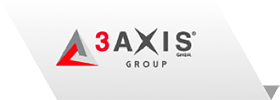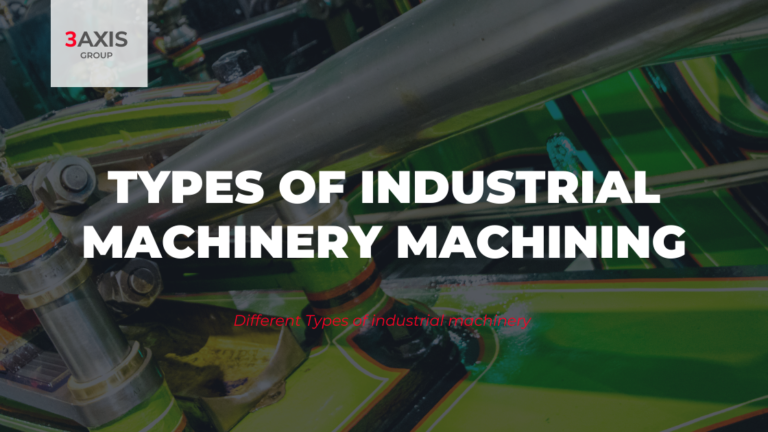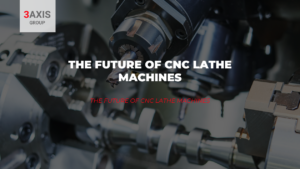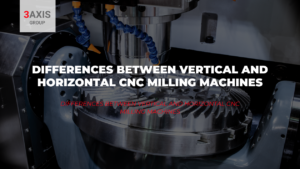There are different types of industrial machinery machining. But before we go deeper into the subject let’s talk about what is industrial machinery. Industrial machinery is defined as machines and equipment used by a manufacturer in a manufacturing plant. To make it clear here are some examples of industrial machinery:
- Milling Machines
- Horizontal milling machine
- Vertical milling machine
- 5-Axis milling machine
- Lathes
- CNC Lathes
In this post we explain everything you need to know about the different types of industrial machines and the differences between them.
Keep reading!
Different Types of industrial machinery
To better understand the classification of the different types of industrial machines, you should know that there are different types of machining according to the way they operate on the workpiece. There are exactly 3 main groups:
- Machining without shaving removal.
- Machining by abrasion.
- Machining by shaving removal.
We are going to focus on machining by shaving removal. This is a process in which the material is removed or cut with a tool generating a shaving, using several perfectly defined cutting edges or blades.
There are different types of machining by shaving removal depending on the type of machine used in the process. We explain three of them:
- Milling: It is the machining operation that consists of turning the cutting tool so that the edges of the cutting edge or blade rest on the workpiece. Machine used: Milling machine.
- Turning: Consists of turning the workpiece as the main form of movement of the metal against the cutting tool. Machine used: Lathe.
- Drilling: This is the machining operation in which holes are produced by bringing a rotating cutter with cutting edges at the lower end of the machine into contact with the workpiece to be machined. Machine used: Usually a drilling machine but also a lathe.
So, what are the different types of industrial equipment? As there are many industries and there is specific machinery for each of them. We will focus on those that are mainly used in the metalworking industry. Which needs specific tools that facilitate and improve the process providing accurate and quality results. The most commonly used machines in the metalworking industry are:
Vertical Machining Centers
This type of industrial machine is characterized by having a rotating head that approaches the workpiece from the top to the bottom. In addition, you can choose between 3, 4 or 5 axes, which means that the machine can execute a multitude of processes and work with parts of various formats. To sum up, vertical machining offers great possibilities in the industry thanks to its flexibility and ease of operation.
Horizontal Machining Centers
It stands out for being able to perform multiple operations automatically thanks to the use of the CNC (Computer Numerical Control) system. It is usually used with large and high parts, which require to be machined in several parts. It also requires highly qualified staff for the programming of these machines, although once it is in operation it hardly requires the intervention of operators.
CNC Lathe
It is a lathe that has been designed to manufacture parts automatically and has implemented CNC software that serves to control these automated processes. This software uses alphanumeric data following the Z, X, Y axes. Besides, this type of machinery is highly valued in the automotive, medical and aerospace industries because it facilitates the process of obtaining parts, since large quantities are obtained and the precision remains excellent.
Vertical Lathe
In vertical lathes, the workpieces stand upright. As they are standing, they need far less clamping force than horizontal lathes to be held in place. More importantly, vertical lathes can be used for turning large and heavy diameter objects that are relatively short. Workpieces can include parts like large wheels or discs, large bearings, aerospace parts, heavy castings and many more.
Just a curiosity! One underestimated advantage of vertical lathes is that they normally need less floor space than horizontal lathes.
Milling-turning Centers
Milling-turning centers combine head and tailstocks of traditional lathes with additional spindle axes to enable the efficient machining of parts that have rotational symmetry (pump impellers, for instance) combined with the milling cutter’s ability to produce complex features.
For example, complex curves can be created by rotating the workpiece through an arc as the milling cutter moves along a separate path, a process known as 5-axis machining.
CNC Milling Machines
This type of milling machine has the CNC system, by which, through a computer you can program the machine to cut or sand, among many other functions. They are designed to produce parts with millimetric accuracy.
Vertical CNC Milling Machines
A vertical milling machine is the most used type. In this type of machines the position on the spindle is vertical, perpendicular to the coordinate table. The spindle holds a rotating cutting tool against the workpiece. The spindle moves vertically, along the Y-axis. Another machine parts shift along the X-axis or even the Z-axis to position the workpiece correctly.
Vertical mills are ideal for projects worked on a single side; this includes sectioning operations or finishing operations like end millwork. Did you know that vertical milling machines themselves can be further divided into two vertical milling machine types?
- Bed milling machines.
- Turret milling machines.
Each functions a little differently from the other, and each offers unique advantages.
Horizontal CNC Milling Machines
Horizontal milling machines have a rotating spindle. This spindle is placed horizontally above the bench. The cutting tool, often a disc resembling a saw blade or a grinder, can move along the length of the spindle. This allows the horizontal mill to remove material along the length of a workpiece, or even functioning as a planer, finishing the entire surface. When we combined with a rotary table, the horizontal milling machine is nearly as versatile as a vertical milling machine.
Discover our marketplace! You will find a wide variety of types of machines and now that you know how to differentiate them, choose the one that best suits your needs. If you still have any doubts you can contact us and we will be happy to help you find the machine that best suits you.




